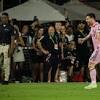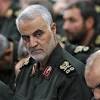Mets predictions: X-factor? Bounce back candidates? Our forecast ...

As another sport has joyously displayed over the last several weeks, sports are hardly predictable. They’d be a heck of a lot less fun if they were. In that regard, attempting to predict what’s going to happen over the next 187 days (and the postseason) of Major League Baseball is inherently foolish — a task designed to embarrass us someday down the line, probably with a screenshot and a pithy tweet (if we’re still tweeting then). Many people are predicting the same 12 playoff teams as last season. MLB has not had a duplicate playoff field since 1978, when only four teams made it. In the wild-card era, 48 percent of the playoff teams did not make it the prior season.
But it makes the project of predicting no less fun, no less worthy of inspiring discussion. With the Mets set to commence their 2023 campaign on Thursday afternoon in Miami against reigning Cy Young Award winner Sandy Alcántara, Tim Britton and Will Sammon predict, broadly, what will happen this season.
Which Mets hitter will outperform his 2022 OPS?Britton: Brandon Nimmo (.800). Nimmo’s 2022 might have been his best all-around season, given his improvement in center field defensively and his ability to stay on the field for 151 games. But while he was quite good at the plate, he’s been better in the recent past, twice running his OPS above .880. The path isn’t even that complex for Nimmo: He just needs to get on base closer to his career track record than he did last season in posting a career-worst .367 OBP.

Sammon: Tomás Nido (.600). Will Nido’s impressive spring training translate to gaudy statistics during the regular season? His track record (career .580 OPS) says no. But Nido remains a sneaky pick to outperform some offensive numbers — even if not by a whole lot. He has worked with hitting coach Jeremy Barnes since the winter on some adjustments that helped him unlock a bit more power. Also, he doesn’t lack motivation, with the Mets bringing in Omar Narváez and with prospect Francisco Álvarez lingering on the 40-man roster.
Which Mets hitter will underperform his 2022 OPS?Britton: Mark Canha (.770). While his primary slash line fit neatly with his career track record, there were a few disconcerting signs for Canha in his batted-ball data and the decrease in his walk rate. His average exit velocity dipped below the league average, his barrel and hard-hit percentages dropped, and his launch angle was a career low. Canha entered this spring hoping to hit more than the 13 long balls he did last season, but there hasn’t been a whole lot of evidence yet of that refined approach working.
Sammon: Starling Marte (.814). All the projections, including FanGraphs’ ZiPS, point to a decline from Marte. Must be true, right? Well, heading into 2022 the projections read similarly, but Marte proved them wrong. The guess here is Marte will remain productive, but something between a .780 OPS to .805 OPS — a small dropoff from last year — seems reasonable, given his age (34) and injury issues, including double groin surgery over the winter.
Which Mets pitcher will post a better ERA than in 2022?Britton: Tylor Megill (5.13). This feels a little like cheating, since Megill’s ERA was inflated by one miserable start right before he hit the IL in May and his ineffective relief stint when he came back in September. Although I wouldn’t expect Megill to be as lights out as he was last April, an ERA closer to the league average feels well within reach.
Sammon: David Peterson (3.83). Peterson has worked on making all five of his pitches legitimate weapons, but his success will likely come down to command, which he might be able to improve with experience. From a stuff perspective, Peterson continues to turn heads; his slider remains sharp, his four-seam fastball looks better and he’s put more work behind a curveball.
Which Mets pitcher will post a higher ERA than in 2022?Britton: Max Scherzer (2.29). Again, this is a little like cheating: Scherzer’s 2.29 ERA last season was the best of his career, and he can still rank as one of the game’s very best pitchers even if he doesn’t set a career-best for a second straight year. Scherzer has been outstanding in the spring, polishing off a 1.53 ERA with an 11-strikeout performance in his final spring start last week.
Sammon: Adam Ottavino (2.06). I don’t think Ottavino will have a bad season. There’s not much to suggest that he will. Perhaps, there is his age (37), but Ottavino operates like an extra pitching coach with how much of a savant he is. In fact, I’d wager on him having another strong season. Still, he’s the pick here just because it’s quite difficult to post an ERA like that from the bullpen in consecutive years. However, this does allude to the point of the Mets’ pitching staff being older and somewhat subject to regression. Edwin Díaz would have been a pick here, too, just because it would’ve been hard to see him do any better than last year. Ditto for Justin Verlander.
Who makes the most starts at catcher?Britton: Nido. While Nido may start the season as the short side of a platoon, he adds so much defensively that he could earn more and more time as the season progresses. He’s displayed an ease with almost any pitcher he’s worked with, and he’s flashed some improvements at the plate so far this spring.
Sammon: Omar Narváez. I expect the Mets to mostly operate with a platoon based on pitcher handedness, meaning Narváez would see the bulk of action because he bats from the left side. My guess is the Mets wouldn’t have given him a two-year guarantee worth $15 million if they didn’t see it that way. Narváez is a quick learner when it comes to getting to know pitchers and his defense can be counted on. Some New York officials believe his offensive numbers can be improved without extreme shifts, but he doesn’t tend to hit balls hard and doesn’t carry a lot of power.
Who makes the most starts at third base?Britton: Brett Baty. Even if he doesn’t start the season as the Mets’ third baseman, Baty has several paths to ultimately claiming the job. If Eduardo Escobar struggles, even just against right-handers like he did last year, Baty is the obvious answer. If Escobar is hitting but Tommy Pham isn’t, the Mets can slide Escobar to DH and start Baty at third. The Mets’ highest ceiling as a team in 2023 includes Baty fulfilling at least some of his considerable potential at third.

Sammon: Baty. If the defense is as improved as evaluators say it is, then Baty should be the everyday third baseman at the first sign of Escobar struggling. If the veteran resembles the guy who posted a career-best month last September, then the Mets have a more difficult call on their hands. From a depth perspective, I understand having Baty start the season in Triple A — for depth purposes, it may be wise because Escobar can help. However, Escobar is 34 and coming off a season where he experienced some injury issues. Baty’s time will come — it’ll just be a matter of precisely when and whether he can hold on to the opportunity. Therefore, it makes sense for the Mets to want to be overly sure of his capabilities at this point and put him in the best position to succeed both for the short term and long term.
The Mets lead by one in the ninth inning of a critical game in September. Who’s closing for them?Britton: I can make so many bold guesses here: David Bednar! Alexis Díaz! Edwin Díaz himself! Kodai Senga! Stephen Ridings! But I think the simplest is the way to go: David Robertson. Robertson is uniquely qualified to step up into the role vacated by Díaz’s knee surgery. I don’t expect he’ll be anywhere close to as good as Díaz was in 2022, but that’s a pretty impossible standard to meet. (Even Díaz was unlikely to be as good as he was last year.) If the standard instead is the long litany of Mets closers who made it interesting before usually getting the job in the end (hey John Franco!), Robertson can reach that.
Sammon: The highest probability is Robertson. But the Mets also liked Robertson’s ability to get out left-handed batters. So, what happens if in a tight game they must turn to him in the eighth or the seventh? We’ll still see Ottavino in plenty of those instances. As far as guys who may break out in the Mets bullpen as alternatives: Ridings and John Curtiss stand out.
Besides Shohei Ohtani, what name will we hear connected to the Mets all July?Britton: A familiar one: Trevor May. The former Met signed with the Athletics in the offseason, where he may spend the first four months of the season closing. He figures to be a prime candidate to be moved in July, and he could fit for the Mets whether they need someone for the ninth inning or just to bolster their late-inning depth.
Sammon: Someone like Royals reliever Scott Barlow makes sense. He’s very good, not spectacular. He will be a free agent the winter after the 2024 season, so there’s still some club control. This is simply speculation. He may fetch the Royals a solid prospect, but shouldn’t require the Mets to trade a top prospect, which is something they’ve guarded against doing dating back to last year. In comparison, I’ve heard that a deal for the Reds’ Alexis Díaz, who won’t be a free agent until 2028, probably starts with prospect Alex Ramirez plus others.
Presuming that Pete Alonso leads the Mets in home runs, who finishes second?Britton: Francisco Lindor. Lindor already finished second on the team in home runs last season, and he stands to benefit from the slightly closer fence in right at Citi Field. After hitting 20 and 26 homers in his first two seasons in Queens, it wouldn’t be a surprise if he cracks 30 for the first time since 2019.
Sammon: Lindor. Alonso should again flirt with 40-plus home runs. It’s conceivable that Lindor can approach 30. Beyond that? Is there anyone who will reach 25? What about 20? The lineup is very good when it comes to quality at-bats and getting on base. However, with a minimal difference from last year’s group, power may again become a concern at times.
Who’s a player we’re not talking about much now that will have an impact on the season?Britton: Stephen Ridings. The Mets have expressed enthusiasm about a bunch of the depth relievers they added over the winter. None of them pique their curiosity quite like the tall fire-balling righty they claimed from the Yankees. The quality of Ridings’ stuff is not in question; it’s just a matter of him getting healthy after a series of physical issues last season. If he can put it all together, he has the kind of right arm that will play in big spots late in games.
Sammon: Danny Mendick’s versatility will help the Mets. He’s the kind of player several successful teams have added in recent years to their 40-man roster. While he may not ever stick with the Mets as a regular, he’s got a capable bat and can fill in virtually anywhere. It helps solve a potential problem, one that the Mets faced toward the end of the season when they didn’t have much to turn to after suffering multiple injuries to their infield. The Mets targeted Mendick early in the offseason to improve their depth. He will probably end up doing just that.
The Mets will finish where in the National League East?Britton: Second. This is less a reflection of my thoughts on the Mets than it is on their competition: I would pick Atlanta to win any division in baseball. It has more answers for its potential questions than just about anyone else, and it has a pretty clear avenue to being even better than it was last year. I expect the Mets to be very good and in the NL East all season long, but I think Atlanta is the best team in baseball.
Sammon: Second. But it will be just as close as it was last year. This may be where losing Díaz hurts. Losing a dominant closer shouldn’t change the overall dynamic of how we look at a team. And it doesn’t with the Mets. But his absence may matter on the margins, and that’s big in a division where every win counts so much. There’s reason to like the Mets here: The lineup remains strong and Justin Verlander probably makes more starts than Jacob deGrom did a year ago. Also, I like the Mets’ depth, one through 40 on their roster; it’s better than a year ago. Players like Mendick and Jeff Brigham, for instance, seem like names that will contribute though they may or may not crack the first roster. When injuries inevitably happen, they are better suited to fill the gaps. But I had a few evaluators tell me that for all the Mets did over the winter, the best move of the division might be how Atlanta landed Sean Murphy. I am not sure I completely agree with that. But it’s hard not to pick a team that remains the standard, should be healthier and looks like they even retooled just enough.
Which National League teams will make the postseason?Britton: The consensus is the same half-dozen teams that made it last year should make it again next year. But that’s happened in a league only once in the wild-card era (the 1999 AL brought back the same four teams as the year before), and the odds are for at least one unexpected interloper to make the field. I’ll go with Atlanta, San Diego, St. Louis, New York, Philadelphia and San Francisco, in that order.
Sammon: The group should look familiar: New York, Los Angeles, St. Louis, Atlanta, Philadelphia and San Diego. I like Chicago and Arizona to surprise and rack up more wins than the projections say they will — it just won’t be enough to sneak into the playoffs.
Who wins the World Series?Britton: Atlanta. Again, I think it’s the best team in baseball. While Michael Harris II might not replicate his Rookie of the Year campaign, there’s room for better seasons from Ronald Acuña Jr. and Matt Olson. Murphy is outstanding. This is the best team in Atlanta since Greg Maddux was in the rotation.
Sammon: Philadelphia. The Mets and Braves profile as the better teams for a 162-game season because of better depth and better pitching. But the Phillies look like the scariest team for the postseason, especially with the addition of Trea Turner, a star with plenty of postseason experience. Eventually, Bryce Harper will return. Even if Rhys Hoskins doesn’t, Dave Dombrowski won’t let Philadelphia meander without upgrading at first base.
(Top photo of Eduardo Escobar and Pete Alonso: Rich Storry / USA Today)


 United States
United States Argentina
Argentina  Australia
Australia  Austria
Austria  Brazil
Brazil  Canada
Canada  Chile
Chile  Czechia
Czechia  France
France  Germany
Germany  Greece
Greece  Italy
Italy  Mexico
Mexico  New Zealand
New Zealand  Nigeria
Nigeria  Norway
Norway  Poland
Poland  Portugal
Portugal  Sweden
Sweden  Switzerland
Switzerland  United Kingdom
United Kingdom 





















